#US Transcontinental Railroad
Explore tagged Tumblr posts
Text
The US railroad is transcontinental?? Congrats on its transition!!
857 notes
·
View notes
Text
currently reading After Promontory: 150 Years of Transcontinental Railroading
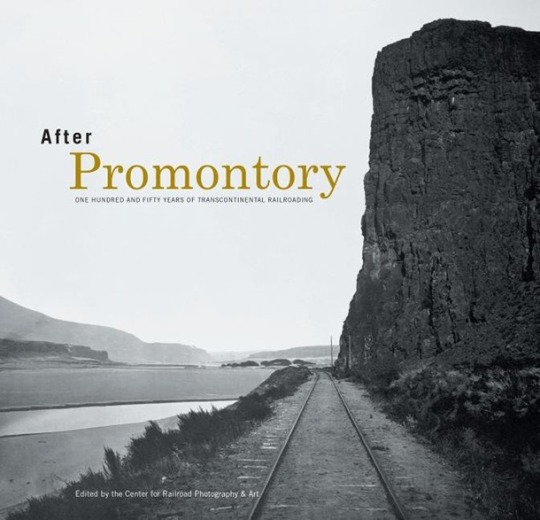
#after promontory#us history#transcontinental railroad#trains#currently reading#currently reading: after promontory#<<<for the blacklist :)
9 notes
·
View notes
Text
#united states#american history#immigration#immigration crackdown#chinese immigrants#transcontinental railroad#us west#history
0 notes
Video
youtube
Cronyism in America: The Nation’s First Big Business | Patrick Newman
#US History#Economic history Cronyism#Government Regulation#Progressive era#Transcontinental Railroads
0 notes
Text
We talk about the rapid change of technology now. But since Industrialization, that's just how it is.
In 1847, white people going from Iowa to California had to do it in wagons, and whether you made it or not in 6 months was 100% contingent on the weather and how fast you could reload a flintlock. By 1869 they has finished the Transcontinental Railroad, and for 4 days you could massacre buffalo with a repeater rifle from the window of a train over the mountains.
That's 22 years. That is the same amount of time I experienced between watching the first Matrix movie and the big screen adaptation of Dear Evan Hansen.
I mean, there was other more significant stuff that happened between those two movies. But I think you get the point.
...There was also some more significant stuff that happened in America between 1847 and 1869, honestly.
Look. Can I do ONE POST without mentioning 1.6 million dead people?? Jeez.
1 note
·
View note
Text

Good Omens x Wild West
Jumped on the transcontinental railroad to play around with how our ineffable husbands would look in the wild west.
Fun facts
Crowley hates horses and horses hate him
Aziraphale is posing as a doctor
Crowley has two guns, but doesn't know how to use them (Aziraphale does, though.)
Aziraphale has to keep miracling away his sunburns because he always forgets his hat (or loses it)
Edit because this is more important to me than it should be lol: not an AU! They're still Angel and Demon, it's merely canon-divergent I would say.
#good omens#good omens fanart#crowley#aziraphale#ineffable husbands#art#goodomens#wild west#good omens x wild west#good omens au#aziracrow#good omens costumes#concept art#character designs#characterdesign#character art#concept design#vavoomart
5K notes
·
View notes
Text
per us law, busses must come to a complete stop and open their doors before crossing any train tracks. i know that this is so that the drivers can both look and listen for oncoming trains, but it gives the impression of giving railroad ghosts a chance to board if they want to. belatedly paying our dues to the thousands of souls lost in the construction of the transcontinental railroad
537 notes
·
View notes
Text
On December 2, 1865, the Southern Pacific Railroad of California was incorporated in San Francisco. The company’s first formal project was the construction of a rail line from San Francisco to San Diego. Timothy Phelps served as the first president of the Southern Pacific until 1868 when the company was purchased the Big Four (Collis Huntington, Charles Crocker, Leland Stanford, and Mark Hopkins) of the Central Pacific.
The Central Pacific-Southern Pacific Railroad played a key role in not only the development of railroad lines in California, but also across the United States, the obvious being the first Transcontinental Railroad completed on May 10, 1869. By 1877, the Southern Pacific controlled 85 percent of railroad traffic in California and it had grown over the years as one of the major freight companies in the United States. In 1996, the Southern Pacific merged with the Union Pacific.
In honor of today, Howard went off the rails with this photo engraving that we have in our print shop exhibit. This cut of an old locomotive going off the rails was printed with black rubber based ink using our Washington hand press.
#on this day#today in history#trains#train#museum#sacramento#history#printing#letterpress#art#printmaking#asmr#old sacramento
203 notes
·
View notes
Text
In fact, far more Asian workers moved to the Americas in the 19th century to make sugar than to build the transcontinental railroad [...]. [T]housands of Chinese migrants were recruited to work [...] on Louisiana’s sugar plantations after the Civil War. [...] Recruited and reviled as "coolies," their presence in sugar production helped justify racial exclusion after the abolition of slavery.
In places where sugar cane is grown, such as Mauritius, Fiji, Hawaii, Guyana, Trinidad and Suriname, there is usually a sizable population of Asians who can trace their ancestry to India, China, Japan, Korea, the Philippines, Indonesia and elsewhere. They are descendants of sugar plantation workers, whose migration and labor embodied the limitations and contradictions of chattel slavery’s slow death in the 19th century. [...]
---
Mass consumption of sugar in industrializing Europe and North America rested on mass production of sugar by enslaved Africans in the colonies. The whip, the market, and the law institutionalized slavery across the Americas, including in the U.S. When the Haitian Revolution erupted in 1791 and Napoleon Bonaparte’s mission to reclaim Saint-Domingue, France’s most prized colony, failed, slaveholding regimes around the world grew alarmed. In response to a series of slave rebellions in its own sugar colonies, especially in Jamaica, the British Empire formally abolished slavery in the 1830s. British emancipation included a payment of £20 million to slave owners, an immense sum of money that British taxpayers made loan payments on until 2015.
Importing indentured labor from Asia emerged as a potential way to maintain the British Empire’s sugar plantation system.
In 1838 John Gladstone, father of future prime minister William E. Gladstone, arranged for the shipment of 396 South Asian workers, bound to five years of indentured labor, to his sugar estates in British Guiana. The experiment with “Gladstone coolies,” as those workers came to be known, inaugurated [...] “a new system of [...] [indentured servitude],” which would endure for nearly a century. [...]
---
Bonaparte [...] agreed to sell France's claims [...] to the U.S. [...] in 1803, in [...] the Louisiana Purchase. Plantation owners who escaped Saint-Domingue [Haiti] with their enslaved workers helped establish a booming sugar industry in southern Louisiana. On huge plantations surrounding New Orleans, home of the largest slave market in the antebellum South, sugar production took off in the first half of the 19th century. By 1853, Louisiana was producing nearly 25% of all exportable sugar in the world. [...] On the eve of the Civil War, Louisiana’s sugar industry was valued at US$200 million. More than half of that figure represented the valuation of the ownership of human beings – Black people who did the backbreaking labor [...]. By the war’s end, approximately $193 million of the sugar industry’s prewar value had vanished.
Desperate to regain power and authority after the war, Louisiana’s wealthiest planters studied and learned from their Caribbean counterparts. They, too, looked to Asian workers for their salvation, fantasizing that so-called “coolies” [...].
Thousands of Chinese workers landed in Louisiana between 1866 and 1870, recruited from the Caribbean, China and California. Bound to multiyear contracts, they symbolized Louisiana planters’ racial hope [...].
To great fanfare, Louisiana’s wealthiest planters spent thousands of dollars to recruit gangs of Chinese workers. When 140 Chinese laborers arrived on Millaudon plantation near New Orleans on July 4, 1870, at a cost of about $10,000 in recruitment fees, the New Orleans Times reported that they were “young, athletic, intelligent, sober and cleanly” and superior to “the vast majority of our African population.” [...] But [...] [w]hen they heard that other workers earned more, they demanded the same. When planters refused, they ran away. The Chinese recruits, the Planters’ Banner observed in 1871, were “fond of changing about, run away worse than [Black people], and �� leave as soon as anybody offers them higher wages.”
When Congress debated excluding the Chinese from the United States in 1882, Rep. Horace F. Page of California argued that the United States could not allow the entry of “millions of cooly slaves and serfs.” That racial reasoning would justify a long series of anti-Asian laws and policies on immigration and naturalization for nearly a century.
---
All text above by: Moon-Ho Jung. "Making sugar, making 'coolies': Chinese laborers toiled alongside Black workers on 19th-century Louisiana plantations". The Conversation. 13 January 2022. [All bold emphasis and some paragraph breaks/contractions added by me.]
#abolition#tidalectics#caribbean#ecology#multispecies#imperial#colonial#plantation#landscape#indigenous#intimacies of four continents#geographic imaginaries#indigenous pedagogies#black methodologies
466 notes
·
View notes
Text
Now we're getting into the realm of OCs. To preface, I was strongly inspired by THIS COMIC. I was also playing with an alternate face design for Random in a couple of these.
Anyway, this is Smokestack!
More below.

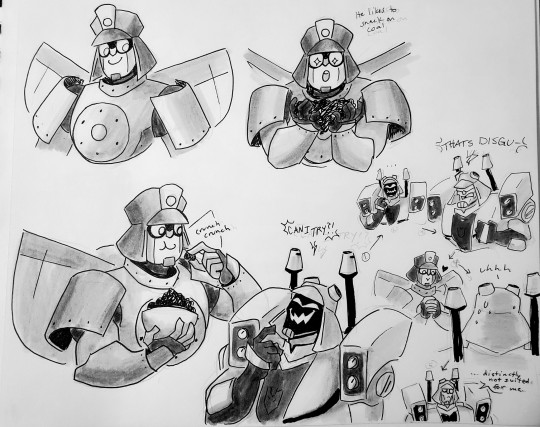


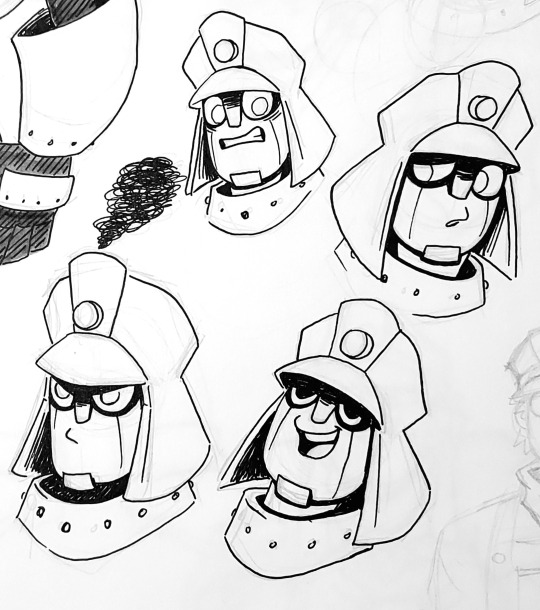

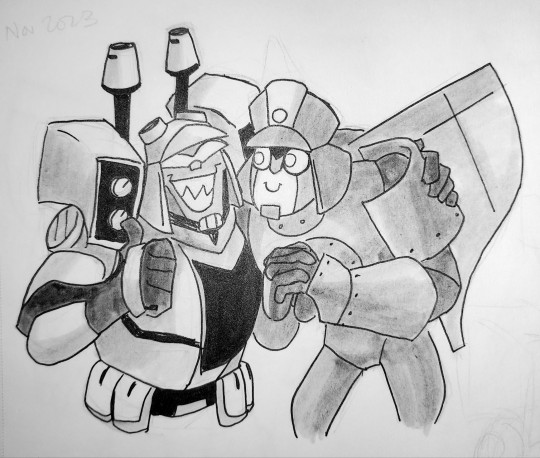
I started drawing @mfdragon 's OC, then kept making my own alterations until he became mine. I researched steam-powered locomotives for this y'all. I'll explain in a minute.
Final tidbit of context: I was playing with an alternate design for the Random face, just so it matched the other two a bit more. How I feel about it goes back and forth. I like Random's OG design, but it's just so different from the others that is doesn't quite fit in.
Okay, ramblings and train info dump under the cut. Get ready to learn stuff you never cared about.
So basically, the idea is that an allspark fragment brought some old abandoned steam engine to life. Like in the comic, it used Blitzwing as a blueprint, so Smokestack is the first naturally occurring triple changer. Which also means he doesn't suffer the same mental instability as the previous triple changers, he's just naive in a similar way that Wreck-Gar is. He is neither Decepticon nor Autobot. He's too sweet to be a Con, but he's too loyal to his "Dad" to be an Autobot. He's also full of train facts.
Time for trains info dump! Disclaimer, I'm not at all an expert and I am simplifying.
In the steam era, each locomotive was custom-made, so there weren't any industrial standard models or anything. Different companies had different classing systems at different times. I tried to figure it out once and gave up. Instead, steam engines are categorized by their wheel arrangements. There are leading wheels, driving wheels, and trailing wheels. The driving wheels are the only required ones cuz those are the ones that move it. The leading and trailing wheels are for stabilization and weight distribution. Different arrangements were better for different things, such as freight vs passenger. I don't know the science behind which ones were good at what.
The kind of trains that built the transcontinental railroad were 4-4-0 configurations, commonly called "American Standard" due to their prevalence during the westward expansion. They had two sets(four total) of leading wheels, two sets of driving wheels, and no trailing wheels. Like: <••⊙⊙]▣□□□ They're little guys.
The single most produced type of steam engine was the 2-8-0 "Consolidation". <••⊙⊙⊙⊙]▣□□□□ It was a good multi-purpose design. So I chose to make Smokestack 2-8-0 because it gave me the most wiggle room for when and where I wanted him to originally be manufactured and in service. By making him a random abandoned one, I didn't have to think about what museum pieces could be in the Detroit area (Nobody but me would care, but I got hung up on that for some reason).
Anyway, when he only has one vehicle mode, Smokestack is his original 2-8-0. Once he upgrades to having two alts, he becomes a 4-8-8-4 "Big Boy" <••⊙⊙⊙⊙-⊙⊙⊙⊙••]▣□□□□, which is LARGE. 16 driving wheels, which are at least as tall as a person! The purpose was to have enough power to handle the steep grades in the Rocky Mountains and similarly difficult terrain with heavy loads. These days, rail companies will just hook up multiple diesel engines to the train to get the needed power. There is only one currently functional Big Boy type train, which occasionally does tours. It came by my place on the anniversary of the transcontinental railroad in 2019, but I didn't understand trains enough to properly appreciate it.
Next, I'll be getting into drawing other characters, and making human designs.
#transformers#transformers animated#tfa#blitzwing#tfa blitzwing#oc#transformers oc#smokestack#trains#a3 art#fanart#traditional art#sketches#Train boy and friends
125 notes
·
View notes
Text
Astrology of the Week

“Eclipsed��� by Misty
✨Monday, March 24th: Sun conjunct Mercury Retrograde (Rx)
This Mercury retrograde period brings a lot of re-evaluations regarding the ideas we want to bring to life, potentially even old ideas that we previously let fall to the wayside. The sun meets up with Mercury, revitalizing our minds with a fresh burst of solar power. Old concepts and conversations can now be looked at from a fresh new perspective.
✨Tuesday, March 25th: Mercury Rx sextile Pluto
As Mercury continues retracing its steps, it goes back to this aspect we last experienced on March 5th. After this enlightenment from yesterday, Pluto adds some focus-power to our minds. We’ll be wanting to get to the root of things today.
✨Thursday, March 27th: Venus Rx enters Pisces & Venus conjunct Neptune
With Venus in Aries, love is a battlefield. Now, Venus retraces its steps back into Pisces, where love becomes more of a fairytale —especially with Neptune coming into play. This feels like the make-up period after a fight with someone you love, when things can once again feel dreamy and cuddly. This is a great time to engage your sense of fantasy, especially when it comes to artistry.
✨Saturday, March 29th: Solar Eclipse in Aries & Mercury Rx enters Pisces
This day marks the last of the eclipses in the Aries/Libra cycle. Since 2023, we have been on a collective journey learning lessons about self vs. other, autonomy vs. dependence, and self-assertion vs. people pleasing. This has been a time of mastering the art of balancing our authentic selves within our interpersonal relationships. Solar eclipses are super-charged new moons to set us on new paths. It’s time to take all of these relational lessons into our next chapter.
Mercury retrograde entering Pisces this same day grants a wonderful opportunity for processing —maybe even mentally escaping— any of the eclipse craziness we’ve experienced this month. This will be a good day for reflecting and reconnecting to your oneness within.
✨Sunday, March 30th: Neptune enters Aries
We are experiencing important outer planet ingresses this year that mark the start of a new era. Neptune —the planet of dreams, illusion, and confusion— spends around 14 years in one sign, and for the last 14 years it was lost swimming with the fish. Today, it enters the sign of the pioneer, the warrior, and leader. The art of astrological prediction requires looking at the past in order to look to the future. The last time Neptune was in Aries was from 1861 - 1875, when we saw:
✨The American Civil War
✨The abolition of slavery in America
✨The invention of dynamite
✨Completion of the first transcontinental railroad
✨The start of the 2nd Industrial Revolution
This is the start of a deeper story unfolding when it comes to the illusion of leadership, and the illusion of the self-made person. This also speaks to the dream of striking out on one’s own in pursuit of freedom and autonomy. These next 8 months will be a taste of what’s to come for the next 14 years, as Neptune makes one final dip into the waters of Pisces later this year.
Book a reading
#neptune in aries#astro observations#astrology#astrology aspects#astrology transits#zodiac#witchblr#astrology forecast#solar eclipse#eclipse season#astrology community#astroblr#astrologyblr#astrologer#astro notes#astrology observations#astrology content#astro community#witch community#witchcore#transit tracking#astro transits#transits#witch altar#altar#spirituality#spiritual awakening
14 notes
·
View notes
Text
Diego Javier Luis is assistant professor of history at Tufts University in Massachusetts. He is the author of The First Asians in the Americas: A Transpacific History (forthcoming, 2024).
Edited by Sam Haselby.
Cape Sebastian in Oregon perches above two forested declivities along a rocky patch of the state’s southern coast. Travel there today, and you are likely to miss a roadside marker that reads:
Spanish navigators were the first to explore the North American Pacific Coast. Beginning fifty years after Columbus discovered the Western continents, Sebastian Vizciano [sic] saw this cape in 1603 and named it after the patron saint of the day of his discovery. Other navigators, Spanish, British, and American, followed a century and a half later.
Standing before this sign, I winced rather predictably as I read ‘discovery’. But simmering beneath my displeasure with this word was a deeper conviction that Sebastián Vizcaíno’s voyage was, indeed, significant, though not in the ways that the sign suggests. Thousands of miles to the east, in Seville, the old centre of the Spanish Empire, I had stumbled upon Vizcaíno’s voyage in the dusty volumes of treasury records for the port of Acapulco, Mexico. Buried in line after line of winding, Baroque script were curious notations – ‘chino’ and ‘japón’ – next to the names of seven sailors that Vizcaíno had recruited for his voyage up the North American coast. To the tune of carriages rumbling through Seville’s cobbled streets and the crinkle of centuries-old pages turning, I read the names again and again:
Antón Tomás Antonio Bengala Francisco Miguel Cristóbal Catoya Agustín Longalo Lucas Cate Agustín Sao
Seven Asian sailors – entombed by an archive and forgotten by human memory – had sailed with Vizcaíno to what is now Oregon. Where in the chronology of Asian American history could these sailors fit? Flip to the beginning of most books on Asian America, and you will find no content earlier than the 19th century. You will be in the world of the Gold Rush, the transcontinental railroad, indenture, and the San Francisco and Los Angeles Chinatowns.
These seven names transport us to a different world, a different timeline, a different Asian America. These sailors’ presence off the coast of Oregon predated not just the entire Asian American canon but also the founding of the United States and even of the Thirteen Colonies. The histories of the first Asians in the Americas do not take place in the nations born from the fires of British colonialism but, rather, they guide us to a region rarely considered relevant to Asian American history: Latin America.
Read more...
114 notes
·
View notes
Text
hello American Girl and/or Mormon history aficionados!! After some of the questions you guys have been sending me/my own personal ruminations, I want to share some of the ideas I have for if AG was going to create a historical Mormon character. (Though, for reasons outlined when I responded to the previous ask about a hypothetical Mormon pioneer doll, I highly doubt AG would go that route and I think there are plenty of valid reasons why they possibly shouldn't.)
That being said, if they did, here are some ideas I think would be interesting or cool. First of all, time frame. I answered the previous anon's question with the assumption that "Mormon pioneer" meant an early Utah settler with a storyline set in the late 1840s or early 1850s. I would actually prefer a slightly later era, and I think that might avoid some of the concerns about two much overlap with Kirsten's era. It also would help fill the forty-year gap between Addy and Samantha's storylines. In terms of narrative gaps, I also think there's a bit of a gap with not having a character whose story is set "out west" in the 19th century. (Kirsten's storyline addresses some issues of westward expansion, but she's really Midwestern, and while Josefina is in a modern-day Southwestern state, in her era that region is not under US political control, which makes for a slightly different narrative.)
Part of the reason why I think not having anything between 1864 and 1904 is such a misstep is that there was so much rapid technological development, population growth, and political/social change during those decades and I feel like we get to see the very beginning of a process with Addy and then we pick up with Samantha when so much change has already happened. I'd like to see a bit of a mid-point, and I think a Western state would be a really interesting place to do that. (Side note: if I wasn't a Mormon history nerd, and if AG didn't already have TWO different 20th century historical characters who live in California, I would say California would be the best setting for an "Old West" character. Utah has a really fascinating history in its own right but is in many ways not particularly representative of the West as a region because the population that settled it was so unique.)
One time period that would be interesting for a Mormon Historical Doll would be the late 1860s. This is still pretty close to Addy's time, but the character would be very regionally and demographically different, of course. A really big element of the technological development in the late 19th century was the expansion of railroad networks, including the Transcontinental Railroad, which was completed in Utah in 1869. It might be really cool to do something with this! Utah Mormons approached the new railroad with both excitement about economic opportunity and some sense of threat to their way of life, which had been shaped by previous geographic isolation from mainstream (and non-Mormon) America. How would a child approach this?
I also think a doll set in the 1880s would be really interesting. This was a really fraught time in Utah history, and the most intense period of anti-polygamy legislation and prosecutions (you'll sometimes hear people call this the Mormon Underground era because so many prominent men went "on the underground" to avoid arrest). In terms of technological and social changes, the advent of the railroad did change Utah society a lot, in part because it enabled a lot more non-Mormons to move to Utah. While still a majority especially outside of Salt Lake City, Mormons were no longer an overwhelming majority and also no longer were able to completely control state politics (partially because the new residents were voting as well, but also because there was a long-term effort by the federal government to install appointed officials to try and break the political power of the church.) So you are looking at a more religiously diverse Utah, a shifting balance of power, and a lot of federal policies viewed by Mormons as oppressive, and corresponding political backlash.
(Note: I would find an 1880s era Mormon doll absolutely fascinating, but it would be likely way more controversial even than the earlier pioneer doll would be, because modern LDS people would be way less enthusiastic about it. The pioneer doll would be from a period of their history that is really culturally glorified whereas a doll from the 1880s would be addressing a period of their history that most everyday non-historian LDS folks often find deeply uncomfortable. The 1860s doll might sort of split the difference, because conflict with the federal government over polygamy would be a more central issue than for an earlier doll but less than for an 1880s doll).
I'm just going to post this for now, but I'll reblog with some further ideas about possible storyline/theme/character choices they could make. I'm trying to clean my apartment lol.
#mormonposting tag#this is probably gonna be a whole saga so if anyone wants to block the tag:#american girl mormon character ideas
33 notes
·
View notes
Note
Professional economists did not reach a consensus that high skill immigration was net beneficial for the economy until the 1980s - 2000s. Previous economists weren’t unaware of some benefits, and governments sure did notice how useful those German Jewish scientists turned out to be. But this was all happening in an era of low baseline immigration (less interest in the question) and far less advanced statistical tools (less ability to answer it).
Wow that's pretty late. I thought that the Ellis Island and Chinese labor building the transcontinental railroad era of American immigration was pretty high baseline immigration though.
I'm just surprised that I can't find any record of anyone going "A huge influx of German Jews would fix our economy, we should totally take them!"
Wait, "high skill immigration"? What about unskilled immigration? I thought that the current economic wisdom was that immigration was good regardless of skill level.
#immigration#jewish#it's the economy stupid#lies damn lies and statistics#oh geez I can tag asks now
14 notes
·
View notes
Note
Do you have specific locations in mind when you write about Panem? For example, is 12 in a particular part of Appalachia for you, etc? I can't tell from Katharsis (which, don't worry about that, because trust me, it says way more about my geography skills than your writing skills lol) so I was curious!
Ahoy, sweet reader!!! Thank you so much for asking this, because it touches on something I have been thinking about more this year. And bear with me, I'm gonna go off a minute, and it will veer more towards Four.
First, let's look at the movie!official map.
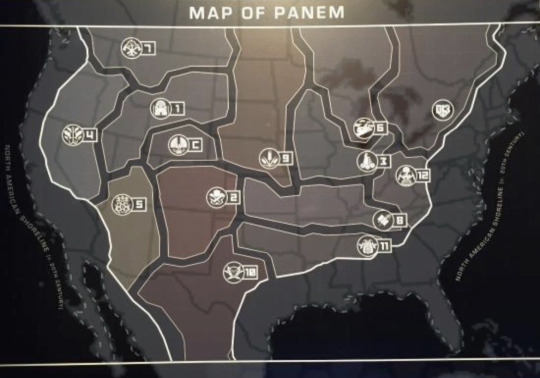
Something that has always bothered me about this is the size and proximity of the Districts. There are some, particularly Nine, Ten, and Eleven, that we can infer or were described as taking up more land. For their industries, they must. However, it is noted that most Districts' populations and economic centers are concentrated in singular towns. In those geographically larger Districts, workers may be shuttled between home and work sites, but there is a limit to how far that can stretch. Two is noted to be the odd one out with its multiple villages. So, given that we know the Districts do not actually take up this kind of space, that there are miles and miles of wilds between their borders, it is really just a display of potential ranges.
I always imagined Twelve in the northern Appalachians, a little east of this map, since I wasn't accounting for as much sea level rise. I like having Thirteen further north, nearer old Canada, to incorporate a wider range of North America, and a Twelve in the northern part of the mountains lets us have that without them being too far for the commutes in Mockingjay. In Ch. 16, I said Buttercup "trekked hundreds of miles," and to get that, I mapped West Virginia to New York. Not super precise. When she gathers herbs in Ch. 9, I did double check their current ranges and preferred growing habitats to try to be accurate. Northern creep explained by climate change. Coming up, they will eat some wild boar. Feral swine are a big nuisance in the south, and they can get up to the range depicted for Twelve. May even spread further with such a decrease in urban environments, but I'm not a terrestrial biologist. Here, the range for Twelve is smaller than the other Districts, and I don't have a more specific headcanon aside from being biased for the bit closer to Pennsylvania.
Now, being a Chicago gal, I do appreciate its inclusion at the tip of District 6. It's where the transcontinental railroad connected and has historically been the intersection of many a terrestrial trade route--and big about trains--thanks to the Great Lakes! To me, Six is there, and they still use old railway paths and the lakes for moving things, even if there isn't much in the direction the lakes lead anymore. No idea why Three would be there; I used to headcanon that as somewhere in California like Silicon Valley or wherever those people moved after it was eaten by the sea. Three should be closer to Five, which is very appropriately placed where solar panels will get a lot of action.
So, about District 4. When I first read the books, if I thought about seafood in the US, I thought about Bubba from Forrest Gump and all the glorious ways he enjoyed shrimp. This led my first thought about District 4 to the Gulf of Mexico. Later, the West coast grew on me, but Southern Four will always have a place in my heart. And that connects to my next point. Let's talk about Aquaculture!
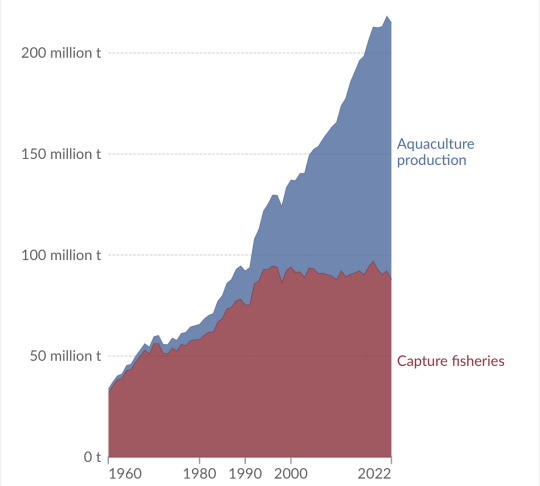
This figure represents world-wide industry and our current environment, so we must take it with a grain of salt to extrapolate to Panem. That said, I do believe that Four does a combination of wild capture and aquaculture. Wild fisheries could be completely depleted for all we know! Aquaculture is the way of sustainability, and I can go on about that for hours. BUT do you know what the top-cultured aquatic species in the US is today? Catfish!

This map is shows the profit of catfish and other freshwater species like bass and tilapia in the South. If we roll with Four being on the West coast, then I will always put it in the northern part of that. Note the shade of Washington. That's salmon and trout! Salmonids and other prized seafood species are cold water animals! They also do a fair amount of salmonid aquaculture in Idaho. I do not buy a Californian District 4. Not with the way the waters are warming. There is so much salmonid aquaculture up that coast into Canada, too! And the "Yellow Death" that Four's trout hatchery scientists make a new vaccine for in Katharsis Ch. 11 is a Flavobacterium sp.
Anyway, thanks for asking!!!
8 notes
·
View notes
Text
👋👋👋👋👋 what are some of your favorite engines? I am partial to the norfolk and western 611 bc it looks cool as hell and is my dad's favorite engine lol
listen I get trains are typically an old guy thing but WHERE are the train ladies.
#also the UNION PACIFIC BIG BOY#me and my dad were supposed to go ride behind it on the 150th anniversary of the completion of the us transcontinental railroad#but it didnt work out lol
11 notes
·
View notes